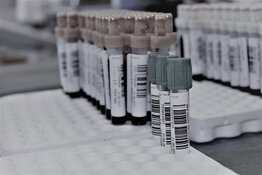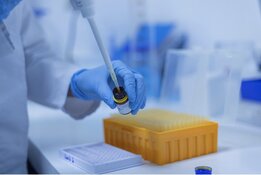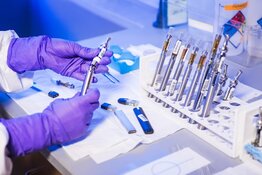The Life Sciences Report: Steve, for medicine in general, what's the allure of cell technologies?
Steve Brozak: For the first time in the history of medicine, instead of providing a drug treatment that "addresses a problem," we can actually harness the body's own immune system to provide the treatment. It's always been feasible theoretically, but now we're starting to see that it is possible. The cells provide treatment rather than molecules: That's the differentiator. There is still a place for traditional treatments, but that model will no longer be tenable.
TLSR: Do you believe that cell technologies portend the greatest growth potential in all of life sciences for investors?
SB: I believe that cell technologies have the potential to be the greatest breakthrough in all of healthcare, and in all of medical understanding as we know it. I'm not telling you that it's going to be a smooth path, because nothing ever is. But yes, that's a very easy statement to make.
TLSR: Why then are cell technologies taking so long to develop as therapeutic modalities? We see a lot of small companies innovating cell therapies, but I don't see big pharma in the game in a big way.
SB: You just hit the nail on the head. That is the case because big pharma doesn't develop drugs. They market—they market very well, and to some degree they overmarket. Drug discovery has been left to the small companies. Who are these small companies? Well, once upon a time, Amgen Inc. (AMGN:NASDAQ) and Celgene Corp. (CELG:NASDAQ) were small companies.
TLSR: Do you think big pharma companies want to just sit back and wait on proof of concept, proof of principle or clinical proof of concept in cell technologies before they jump in? Or is there unwillingness for other reasons, such as fear of hurting current pipelines and product lines in some way?
SB: I wouldn't go in either direction. I would say that big pharma operates exactly the way it's incentivized to operate. No one ever lost a job for saying no to a new program, but lots of people have lost their jobs for saying yes to a program that turned out differently or that didn't have the backing of everyone, including the janitor.
"I believe that cell technologies have the potential to be the greatest breakthrough in all of healthcare, and in all of medical understanding as we know it."
The problem with large pharma is you need to get everyone to agree to a program, and that's just not possible. As a result, you have "me-toos" and the monstrous acquisitions that take place. What happens is that the really creative people spin themselves off, saying, "I'd like to go out there and try this." It's easier to get something developed outside of large pharma than it is within large pharma.
TLSR: Steve, let me shift to antibiotics and infectious disease. What is the greatest need today in the antibiotic realm?
SB: Right now, we need a "911" antibiotic that will address the fact that we are facing an antibiotic canyon. That's the reality. There are plenty of bugs out there right now that are nasty and incurable. The good news is that they haven't spread yet, but that's just a function of time. How do you quantify that time? To quote Clint Eastwood: "Do you feel lucky?"
TLSR: Do you see a solution?
SB: People often say the government's the problem, but in this case it is the answer. Governments have spent, and need to continue spending, money on dual-use strategies. They can find a use for something the average pharmaceutical company couldn't justify spending money on, and they can get it developed and approved based on the therapy being useful in several indications. With bacteria, if a drug works for the treatment of one type of infection, it usually is effective in the treatment of multiple pathogens.
TLSR: An antibiotic fits its target like a key fits in a lock. Any tiny change in that lock will make that key ineffective. Likewise, a lone mutation in a bacterium will render it resistant to an antibiotic. Is there any development going on that will prevent antimicrobial agents from being easily circumvented by mutated strains of bacteria?
SB: There are prototypes out there, different approaches that researchers are looking at. An antibiotic is not going to be an orphan drug. We're talking about something that's going to be used for mass consumption, so drug developers have to make sure that it's incredibly safe. Candidly, right now what we're doing is triage 101. We need an antibiotic not for tomorrow, but for yesterday.
TLSR: Let's talk about your ideas. Go ahead and give me some names that you're recommending to investors. You can start with cell technologies if you wish.
SB: On the stem cell technologies front, Cytori Therapeutics Inc. (CYTX:NASDAQ), in San Diego, is an example of the corporate side and the government working hand in hand. The company was awarded a Biomedical Advanced Research and Development Authority (BARDA) contract to deal with radiation burns. The highlight here is that the same treatment protocol can be used for all other burns as well. A burn is a burn is a burn. Additionally, the novel part about this contract is that Cytori has to go back into its preclinical animal models and repeat what it has done in humans. That's not a heavy lift, is it?
"We need a '911' antibiotic that will address the fact that we are facing an antibiotic canyon."
The company is starting to show that it can use the patient's own stem cells to restore the native function of the body's systems. That's something no one has ever done before. Cytori is looking to vascularize, or I should say revascularize, tissues with its adipose-derived stem and regenerative cell (ADRC) technology so that the patient is assisted by his or her own healing mechanism through a continuous blood supply.
TLSR: The deal with BARDA was signed at the end of September, and it is worth up to $106 million ($106M) if all contract options are exercised. When could this be monetized?
SB: As soon as the company gets its preclinical work done it will have a live contract. We believe that Cytori is a benchmark company that can provide entrée for others once it tells its story.
I mention Cytori, but to some degree I'm agnostic as to which companies might get stem cell therapy done. I will throw into the mix Aastrom Biosciences Inc. (ASTM:NASDAQ), Athersys Inc. (ATHX:NASDAQ) and NeoStem Inc. (NBS:NYSA.A). All of these companies have different products and different ways of working on the same ultimate concept. In the case of Cytori, investors also have the government advocating for its technology.
TLSR: On Nov. 30, 2012, Cytori closed at $4.19. It raised $20M back in mid-December, and it's now trading at under $3. Dilution is a problem that faces micro-cap investors every single day. How do you manage a situation like this as an investor? Do you buy more shares, or what?
SB: I would tell you to ignore the issuance of new shares. What's of greater importance is who the shareholders are. I would rather be diluted with the best institutional shareholders possible than have fewer shares with lesser-quality shareholders. Does anyone really care today how many shares Amgen issued when it started? Or Celgene? It wasn't a factor. However, I should say that anything taken to the extreme is not a good thing.
TLSR: I'm looking at the company's clinical trial site map, and I'm noting that there are two U.S. sites where the ATHENA trials are being conducted for refractory heart failure. But there are no plastic or soft tissue defects trials taking place anywhere in the U.S. Can you comment on that?
SB: Right now, the key is seeing results on the cardiac side. When you have a company of this size, with a $165M market cap, you want it to keep its priorities straight. The ATHENA trials in the U.S., and the company's pivotal ADVANCE trials for acute myocardial infarction in Europe, will be critical determinants in 2013. That's what I would look at.
On the plastics or reconstructive side, Cytori knows that what it has works. One thing about working with the government is that it won't work with a company unless the company has a technology that can be approved.
TLSR: Go ahead with your next idea.
SB: Let's talk about Athersys. We at WBB Securities acted as a financial adviser on one of its transactions. It has a large partner, Pfizer Inc. (PFE:NYSE), and is looking for other partners. The company lends itself well to the partnering model. The science we're talking about is elegant, and big pharma is still trying to figure it out. Therefore, deals are not struck overnight. The company has multiple projects that it is looking to partner. When that happens, it will be additional validation.
TLSR: One of Athersys' indications is acute myocardial infarction, where it is doing a phase 1 trial. That brings to mind a question. You mentioned Athersys, Aastrom and NeoStem in the context of Cytori and the fact that the companies were doing similar things. How good does the intellectual property (IP) have to be for these companies to differentiate themselves enough so that their product lines aren't siphoned off or commoditized by other companies?
SB: The companies may be working with the same science, but they're doing it differently. Obviously, we look at IP. Companies must have IP to protect their franchises. But being first in this space, with good IP, is 10 times better than being 10th with perfect IP. By the time a company gets to perfect IP, it won't know where it stands in terms of other companies in the field and what they're doing.
TLSR: What's your next idea?
SB: I'd like to talk about Aastrom. The company is dealing with critical limb ischemia (CLI), which is absolutely devastating and where no adequate therapies other than palliative care are available. In CLI, plaque buildup in leg arteries restricts blood flow, causing pain and tissue loss and sometimes resulting in amputation, with a 25% mortality rate in just the first year. This company has a technology that can be demonstrative of the power of regenerative medicine. People may complain that it has taken longer than expected, but Aastrom does have significant investor backing. I like to see that in a company. Have you seen pictures of CLI patients?
TLSR: Yes, it is truly overwhelming. Where is the company now? How far along is development?
SB: The company has completed a phase 2 trial where the clinical endpoints suggested strong therapeutic potential. There is a multicenter phase 3 trial in progress called REVIVE, which is a randomized, double-blind and placebo-controlled study. These are tough situations, and the patients enrolled must have tissue loss on a leg and have no other options for revascularization. There are also three phase 2 trials, one of which is completed, for dilated cardiomyopathy, which is the third leading cause of heart failure.
TLSR: Go ahead with your next one.
SB: The next one is NeoStem, which gets the least credit for a lot of progress and has more opportunities than most biotechs. Its Amorcyte program is in phase 2 for acute myocardial infarction. Its Athelos program is being investigated by leading clinicians around the country for indications such as type 1 diabetes.
"I would rather be diluted with the best institutional shareholders possible than have fewer shares with lesser-quality shareholders."
Again, the company is a micro cap, with a $100M market cap, and when investors start to talk about micro caps, they have to assume that there's a certain risk involved. Buyer beware. NeoStem has manufacturing capability through its acquisition of Progenitor Cell Therapy (PCT) in January 2011. PCT is the group that did Dendreon Corp.'s (DNDN:NASDAQ) manufacturing before Dendreon went off on its own. That manufacturing capacity is an exceptional asset with two benefits: It allows NeoStem to control its destiny and offers a cost-effective platform for collaboration with other biotechs.
TLSR: Do you have another stem cell company?
SB: The last one is BioTime Inc. (BTX:NYSE), specifically because an acquisition is involved. You asked about IP before. If the BioTime acquisition subsidiary should acquire all of Geron Corp.'s (GERN:NASDAQ) embryonic stem cell (ESC) assets, that will make BioTime, by definition, the repository of most of the meaningful assets in embryonic stem cell technology, as well as the research into clinical applications.
TLSR: On that news this stock is up 33% over the past four weeks. Why couldn't Geron develop this technology, monetize it and become a big company? If the idea is so good for BioTime, why wasn't it good for Geron?
SB: I will come to Geron's defense in the first instance, and I'll say in the second instance that you will have to ask management. In the first instance, previous rules enacted by the Bush administration put a stifling grip on ESC technology development. Companies can't develop technology by themselves. They have to have collaborators—multiple researchers that are not within the fold. Because the governmental hurdles were raised, Geron no longer had multiple shots on goal, and it made a business decision. It decided it had a number of resources that could be developed, and it wanted to go down the oncology route. I disagreed with that decision.
TLSR: Let's shift to antibiotics. What's your best idea?
SB: My best idea would easily be Cempra Inc. (CEMP:NASDAQ). It has a late-stage product, solithromycin (CEM-101), in phase 3 studies for community-acquired bacterial pneumonia. It's a product that we know a lot about. Versions of solithromycin have been marketed on and off, but this is the first one with a remarkable safety profile. As a result, the company has a product that people know works. We are looking at a first line of antibiotic defense with multiple applications that could include respiratory tract infections, chronic obstructive pulmonary disease, cystic fibrosis and others.
TLSR: Cempra also has Taksta (fusidic acid) in phase 2 for methicillin-resistant Staphylococcus aureus (MRSA).
SB: Taksta is an interesting product with a lengthy record of safety and efficacy outside the U.S. It has wonderful product potential for acute skin infections that may not heal in some cases. It is also being tested in phase 2 for prosthetic joint infections.
TLSR: But the value driver here is clearly solithromycin. Is that right?
SB: Right. The most important things on the list are the pulmonary indications. It could be the product a patient has to have, or he or she dies. This is not hypothetical: We are in the middle of the flu season, and people are dying from opportunistic infections that are occurring because their immune systems are compromised. Cempra has to test through these flu seasons to see how the pulmonary side works.
TLSR: Both of these drugs, solithromycin and fusidic acid, are useful orally. Is that the value proposition?
SB: Yes. They are orally useful. But the real value driver is that they can be used against multiple organisms. Sometimes you just don't have time to figure out what exactly is causing an infection, and you need to give a drug that will just work.
TLSR: Go ahead with your next idea.
SB: Durata Therapeutics Inc. (NASDAQ:DRTX) has a special protocol agreement with the U.S. Food and Drug Administration. The company is developing dalbavancin for acute bacterial skin and skin structure infections (abSSI) resulting from gram-positive bacteria that could include Staphylococcus aureus and MRSA. The drug has completed more than a dozen clinical trials over the last decade, and more than a thousand patients were treated in these studies. Dalbavancin has a good profile, and it's designed for once-weekly intravenous dosing.
TLSR: Is there one more antibiotic company you might talk about?
SB: Trius Therapeutics Inc. (TSRX:NASDAQ) has a phase 3 candidate, tedizolid phosphate (TR-701) for MRSA/abSSI, which can be orally administered. The drug is in phase 2 for other indications. It is characterized by greater potency and a shorter dosing schedule, and is shown to be active against some drug-resistant strains.
TLSR: Just in general, it's good to see companies begin to think about biofilm infections, like MRSA, as being distinct in their disease phenotype. They are a lot tougher to deal with.
SB: We take for granted that we have a sanitary medical system. But unfortunately, though you now see a situation in hospitals where the plastic, the walls and everything else is clean, two ultimately devastating factors make this more and more problematic to maintain. One is the difficult economy. As a result, hospital systems have to provide more service with less staffing. They are being squeezed. The second is that patients are sicker now.
TLSR: Thank you so much. It was so nice speaking with you.
SB: The same, and thank you.
Stephen Brozak, president and managing partner with WBB Securities LLC, is a top-ranked analyst in the biotechnology sector, according to the Starmine ranking system. He has been in the securities industry for more than 25 years, where he has held positions in sales, management, investment banking and research analysis. He has been intimately involved in providing research on a number of companies. Brozak has a bachelor's degree and a master's degree in business administration from Columbia University. He is a retired lieutenant colonel in the United States Marine Corps.
Want to read more Life Sciences Report interviews like this? Sign up for our free e-newsletter, and you'll learn when new articles have been published. To see a list of recent interviews with industry analysts and commentators, visit our Streetwise Interviews page.
DISCLOSURE:
1) George S. Mack of The Life Sciences Report conducted this interview. He personally and/or his family own shares of the following companies mentioned in this interview: None.
2) The following companies mentioned in the interview are sponsors of The Life Sciences Report: None. Streetwise Reports does not accept stock in exchange for services. Interviews are edited for clarity.
3) Steve Brozak: I personally and/or my family own shares of the following companies mentioned in this interview: None. I personally and/or my family am paid by the following companies mentioned in this interview: WBB Securities has acted as financial advisor for Athersys Inc. I was not paid by Streetwise Reports for participating in this interview.












































